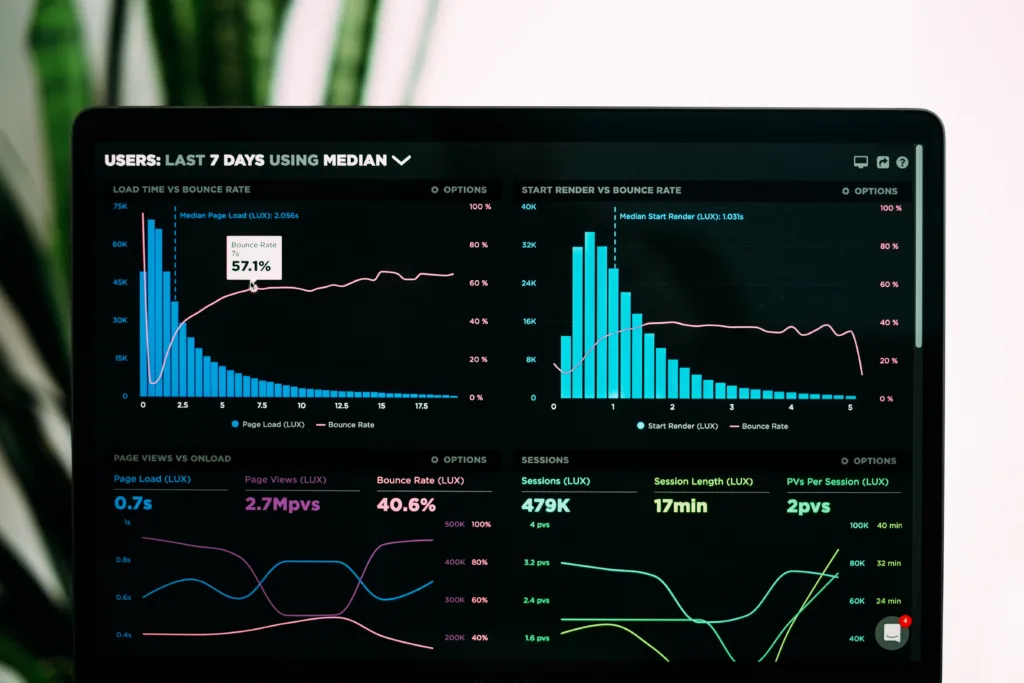How Will Core Web Vitals by Google Impact Your Site Ranking in 2023?

Google’s Core Web Vitals is a set of performance metrics that measure the user experience on a website. These metrics are designed to help website owners understand how their site is performing and identify areas for improvement. Google has been using these metrics as a ranking factor for its search engine results. This means that the better a website’s Core Web Vitals scores, the higher it will rank in search results of 2023.
How Google Measures Core Web Vitals?
The three performance metrics that Google uses to measure Core Web Vitals are:
Cumulative Layout Shift (CLS)
This metric measures the visual stability of a website. It looks at how much elements on a website move around while it’s loading, which can be disruptive to the user’s experience. A lower CLS score is better, and the goal is to keep it below 0.1 and never higher than 0.25. This is because high CLS score means that the layout of the webpage is shifting around while it is loading, which can be disorienting for users.
Largest Contentful Paint (LCP)
This metric measures the loading speed of a website. It looks at how long it takes for the largest element on the website to load, such as an image or a video. Any site that scores 2.5 to 4 seconds is considered average, while a score beyond 4 seconds ends up being unsatisfactory. The goal is to keep the LCP score under 2.5 seconds.
First Input Delay (FID)
This metric measures the interactivity of a website. It looks at how long it takes for the website to become interactive after it loads. For example, FID measures the average time taken to get a feedback after clicking on a particular page element of the website. The goal is to keep the FID score under 100 milliseconds. As high FID score means that the user has to wait a long time before they can interact with the webpage, which can be frustrating for users.

The Essentials of Core Web Vitals
To measure these performance metrics, Google uses a combination of tools such as the Chrome User Experience Report (CrUX), the Lighthouse tool, and the PageSpeed Insights tool. These tools provide website owners with data and recommendations on how to improve their Core Web Vitals scores.
Improving Core Web Vitals can be achieved by implementing various techniques such as:
- Minimizing the size of images and other media files by reducing their file sizes
- Minimizing the number of requests made by the website
- Using lazy loading for images and videos
- Reducing the number of elements that need to load before the user can interact with the site
- Minimizing the use of animations and pop-ups (third-party scripts)
- Using a Content Delivery Network (CDN)
By focusing on improving the Core Web Vitals, website owners can expect to see an increase in traffic, engagement, and ultimately, revenue. With higher search rankings, website owners can reach more potential customers, and improve the overall user experience.

Bottom Line- Take Your Site Ranking to New Heights With Higher CWV Scores
In conclusion, Google’s Core Web Vitals will have a significant impact on website ranking in 2023. Website owners should focus on improving their Cumulative Layout Shift (CLS), Largest Contentful Paint (LCP) and First Input Delay (FID) to ensure that their site ranks well in search results. With higher search rankings, website owners can expect to see an increase in traffic, engagement, and ultimately, revenue. Therefore, it’s crucial for website owners to start implementing the necessary changes as soon as possible to ensure their site is well-prepared for the algorithm updates.